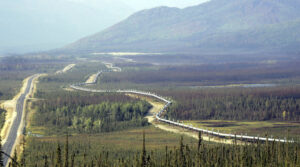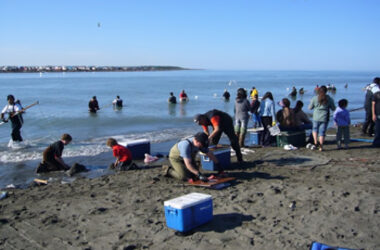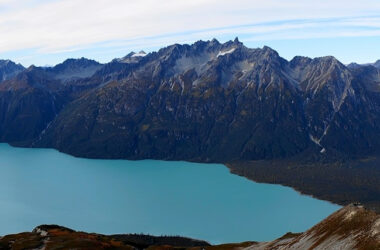
JUNEAU, Alaska (AP) — Environmental groups on Wednesday petitioned the U.S. Department of Interior to review climate impacts related to the decades-old trans-Alaska pipeline system and develop a plan for a “managed phasedown” of the 800-mile (1,287-kilometer) pipeline, which is Alaska’s economic lifeline.
The request comes more than a year after the Biden administration approved the massive Willow oil project on Alaska’s petroleum-rich North Slope, a decision that was welcomed by Alaska political leaders seeking to stem a trend of declining oil production in the state and by many Alaska Native leaders in the region who see the project as economically vital for their communities. Willow, which is being developed by ConocoPhillips Alaska, could produce up to 180,000 barrels of oil a day.
Some of the groups who filed the petition, including the Center for Biological Diversity and Sovereign Iñupiat for a Living Arctic, are among those who have asked an appeals court to overturn the approval of Willow. A decision is pending.
Oil flow through the trans-Alaska pipeline system averaged around 470,000 barrels a day last year. At its peak, in the late 1980s, about 2 million barrels a day flowed through the line, which began operating in 1977.
The last environmental analysis, done more than 20 years ago as part of a right-of-way renewal, is “woefully outdated,” the groups said in their petition. They cite the rapid warming and changes the Arctic region has experienced, noting that several ice-reliant species, such as polar bears, have received Endangered Species Act protections since the last review. They also raise concerns about the impacts of thawing permafrost on the pipeline infrastructure. While the next environmental review is expected in about a decade, that’s too long to wait, they argue.
“Every drop of oil that moves through the pipeline is more climate devastation, both here in Alaska and around the world,” said Cooper Freeman, Alaska director for the Center for Biological Diversity. “The longer we wait to have this hard conversation about the inevitable — because we must transition off of fossil fuels and we have to do it urgently — the harder it’s going to be for Alaska.”
Michelle Egan, a spokesperson for pipeline operator Alyeska Pipeline Service Co., said in a statement that the company continues to “collaborate with our numerous federal and state regulatory partners as we meet our commitments to safe and environmentally responsible operations. We are steadfast and dedicated to being a prudent operator, safely and reliably transporting oil from the North Slope of Alaska into the future.”
Freeman said Interior can accept the groups’ request or deny it, which the groups could challenge. If Interior doesn’t respond in what would be considered a reasonable amount of time, the groups can seek to compel a response through the courts, he said.
Interior did not have a comment, spokesperson Giovanni Rocco said by email.
The petition asks that the U.S. Bureau of Land Management, which falls under Interior, evaluate a range of options that include not renewing the right-of-way, issuing a right-of-way for a period of 10 or fewer years to allow for “continuous re-evaluation of the landscape in which TAPS operates,” setting potential limits on how much oil flows through the pipeline and requiring North Slope oil producers to adopt emissions controls for their operations.
The groups say the “only rational conclusion of that analysis will be a managed phasedown of the pipeline,” and their petition calls on the land management agency to begin work on such a plan. It doesn’t suggest a timeline for a phasedown.
“We’re not asking for the pipeline to shut down tomorrow. We’re saying you need to start the conversation now,” Freeman said. “That includes extensive conversation, engagement, consultation with communities across Alaska, especially on the North Slope. … The longer we wait, the more pain for people, wildlife and the climate, especially here in Alaska.”






